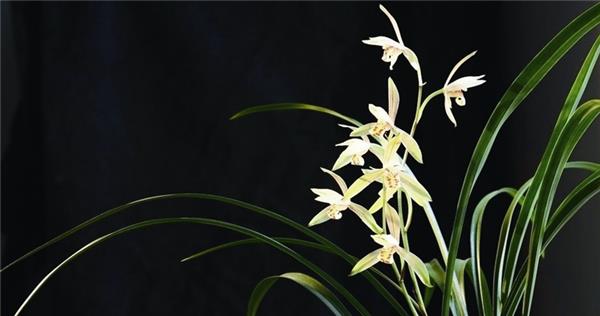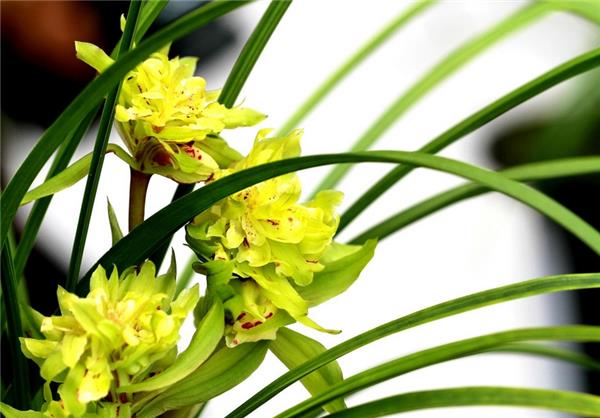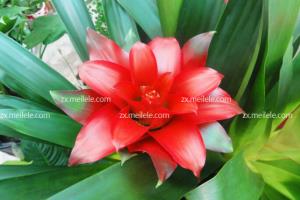Cultivation methods of orchids
Mastering orchid cultivation techniques is good for both our investment and our own home-raised orchids in the future. Orchids are not very easy to take care of. How to make them thrive under limited conditions is a job that everyone who likes orchids has to do.

Cultivation techniques of Orchid
Separate orchid clumps, do not be too fragmented, each clump has at least 3-5 seedlings, preferably one-year, two-year and three-year plants in the same cluster.
Cushion basin
The bottom of the basin is covered with a tile, and then gradually filled with bricks, tiles or shells, in which the large gap is filled with mud or pea stone, which is generally about the height of the basin. The net height of the rest is about 10-15 cm, which is reserved for culture soil. Its specific height should be determined according to the type of orchid, the length of the orchid root and the height of the basin. The bedding should not be filled too close and too solid, and a little hole should be retained. Practice has proved that some new roots can grow well in the pores of the cushion layer.

Planting
On the cushion layer, fill in 2-3 cm of culture soil and compact it slightly with your hand, and the orchid can be placed upright on it. According to the size of the plant and flowerpot, several individual plants, 2 clumps, 3 clumps or more clumps can be planted in one pot. 3 clusters should be planted into a tripod. Four clumps can be planted in a square, and five clumps should be arranged in the shape of plum blossoms. Langen should stretch naturally, and the leaves should be covered in all directions. To slowly put the Langen into the basin, so that the Langen naturally stretch, try not to rub with the inner wall of the basin. After the orchid plant is put into the basin, the posture of the orchid plant is gradually fixed. When potted in a clump, the old false bulbs should be deviated to one side, so that the new buds have room for development. If several clusters are planted in a pot, the old false bulbs of each cluster should be relatively gathered in the middle of the pot, so that there is enough room for new roots and buds to develop outward.
Fill soil
When planting, hold the leaves in one hand and add nutritious soil in the other to hold the base of the orchid plant up slightly to stretch the root system and shake the orchid basin at the same time. Let the culture soil go deep into the rhizosphere; continue to add soil, shake the orchid pot, and adjust the position and height of the orchid plant. Press along the edge of the basin by hand, but do not overweight and hurt the root, continue to add soil and squeeze until the basin soil is 2-3 meters higher than the mouth of the basin, slightly in the shape of steamed bread. The culture soil should cover all the orchid roots and cover them to the base of the pseudobulb. The traditional view is that Chunlan should be shallow and Huilan should be deep, but it is generally based on the leaf base that is not buried and on the pseudobulb. When the new orchid grows in the mountains, it leaves a clear mark on the soil surface, which can prevail. The size of the flowerpot should also be commensurate with the size and number of the plant, neither the pot is large and the plant is small and small, nor should the pot be small and the plant is large and many. In general, the number of plants is expected to be full in 2-3 years. The plant size is commensurate with the height of the basin. It is not only conducive to growth, but also in line with ornamental requirements.

Shop surface
After planting, you can spread a layer of small stone grains or moss on the surface of the basin soil, preferably high-quality moss under the forest, which is not only beautiful, but also can adjust moisture, but also can protect the leaves from being polluted by mud and water, and the new buds will not be infected with bacteria in the soil. In addition, it can also slow down Rain Water's erosion of the basin soil and keep the basin soil loose.
Watering
After the planting is completed, water must be watered for the first time, so that the basin soil must be soaked, the water droplets should be small, and the impulse should be avoided. If immersed in a basin, do not soak for too long. As soon as the basin soil is soaked, move the orchid basin out immediately, and then move it to a shady place for maintenance.

The content of orchid cultivation technology is shared with you first. I hope the above content can help us understand this problem better. Please look forward to more wonderful content.
Related
- Wuhan Hospital Iron Tree Blooming Result Was Instantly Frightened by the Gardener Master
- Which variety of camellia is the most fragrant and best? Which one do you like best?
- What is the small blue coat, the breeding methods and matters needing attention of the succulent plant
- Dormancy time and maintenance management of succulent plants during dormancy
- Minas succulent how to raise, Minas succulent plant pictures
- What are the varieties of winter succulent plants
- How to raise succulent plants in twelve rolls? let's take a look at some experience of breeding twelve rolls.
- Attention should be paid to water control for succulent plants during dormant period (winter and summer)
- Watering experience of twelve rolls of succulent plants
- Techniques for fertilizing succulent plants. An article will let you know how to fertilize succulent plants.



